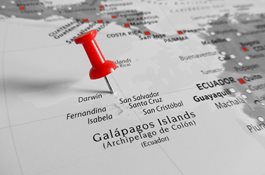
Historical what-ifs are always interesting. Imagine Washington's boat was in dry dock when it came time to cross the Delaware? Suppose Lenin got stuck in traffic in 1917 and missed the sealed train to the Finland Station? And what if Charles Darwin hadn't sailed on HMS Beagle?
He might not have. Darwin's original master plan was to follow in the footsteps of his physician father. He enrolled in the University of Edinburgh in 1825 to study medicine. Darwin enjoyed his studies — Edinburgh was considered the best center for scientific study in Britain, and it was at the university that Darwin began to formally study geology and botany — both subjects that had fascinated him as a boy. It was also in Edinburgh that Darwin was exposed to the ideas of the English Dissenters, who were beginning to question accepted theories of biology and creation.
Darwin might well have remained at Edinburgh but for a pathological fear of blood, which ruled out medicine as a career. Plan B took took him to Christ’s College, Cambridge to study liberal arts and divinity with the view to becoming a parson. Happily for modern science, young Darwin was befriended by the Reverend John Stevens Henslow, a popular botany professor, whose pioneering and dynamic teaching style included a strong emphasis on empirical observation and independent discovery. Henslow was instrumental in securing Darwin the plum position of “suitable gentleman naturalist” the second expedition of HMS Beagle: a five-year circumnavigation of the globe for the purposes of creating detailed hydrographic surveys of the coastal areas of South America and Asia, as well as other, more exploratory and evangelical purposes.
Captain Robert Fitzroy was very specific about his needs for the unusual position of “gentleman naturalist.” He wanted an expert in geology, but he also hoped to find a real companion for the voyage, someone of his own class with whom he could share the lonely captain’s table and with whom he could converse on various topics. He knew well the psychological problems that could result from the challenges of a rigorous voyage to remote areas: the captain of HMS Beagle’s first expedition had shot himself in the remote waters of Tierra del Fuego after a lengthy bout of depression.
Darwin, who faced the prospect of becoming a country parson with very little enthusiasm, jumped at the chance. HMS Beagle set sail in December of 1831 and it was on this voyage that Darwin first visited the Galapagos Islands and began to formulate his ideas about the natural selection thanks to his observation of the species on the isolated archipelago. During the five-year voyage, Darwin kept a detailed diary of some 770 pages in addition to 1750 pages of notes about the things he had discovered, critical data that would become a major component of his seminal work on
The Origin of the Species.
The Galapagos Islands remain a treasure trove for students of biology, history, and botany. Speak to a knowledgeable Alexander+Roberts reservation agent to learn more about visiting this exciting destination on itineraries such as our
Quito + The Galapagos.